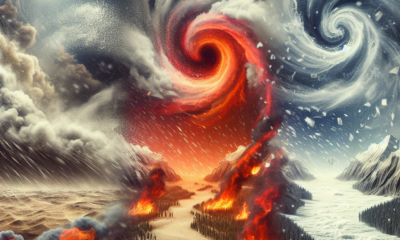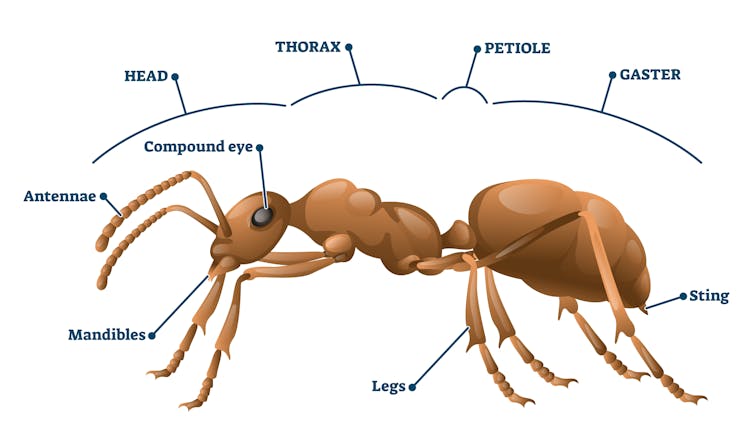
PIXOLOGICSTUDIO/Science Photo Library via Getty Images
Eleanor Rivera, University of Illinois Chicago
For a disease afflicting 35.5 million people in the U.S., chronic kidney disease flies under the radar. Only half the people who have it are formally diagnosed.
The consequences of advanced chronic kidney disease are severe. When these essential organs can no longer do their job of filtering waste products from the blood, patients need intensive medical interventions that gravely diminish their quality of life.
As an assistant professor of nursing and an expert in population health, I study strategies for improving patients’ awareness of chronic kidney disease. My research shows that patients with early-stage chronic kidney disease are not getting timely information from their health care providers about how to prevent the condition from worsening.
Here’s what you need to know to keep your kidneys healthy:
What do your kidneys do, and what happens when they fail?
Kidneys have multiple functions, but their most critical and unglamorous job is filtering waste out of the body. When your kidneys are working well, they get rid of everyday by-products from your normal metabolism by creating urine. They also help keep your blood pressure stable, your electrolytes balanced and your red blood cell production pumping.
The kidneys work hard around the clock. Over time, they can become damaged by acute experiences like severe dehydration, or acquire chronic damage from years of high blood pressure or high blood sugar. Sustained damage leads to chronically impaired kidney function, which can eventually progress to kidney failure.
Kidneys that have failed stop producing urine, which prevents the body from eliminating fluids. This causes electrolytes like potassium and phosphate to build up to dangerous levels. The only effective treatments are to replace the work of the kidney with a procedure called dialysis or to receive a kidney transplant.
Kidney transplants are the gold standard treatment, and most patients can be eligible to receive them. But unless they have a willing donor, they can spend an average of five years waiting for an available kidney.
Most patients with kidney failure receive dialysis, which artificially replicates the kidneys’ job of filtering waste and removing fluid from the body. Dialysis treatment is extremely burdensome. Patients usually have to undergo the procedure multiple times per week, with each session taking several hours. And it comes with a major risk of death, disability and serious complications.

Picsfive via Getty Images
What are the risk factors of chronic kidney disease?
In the U.S., the biggest contributors to developing chronic kidney disease are high blood pressure and diabetes. Up to 40% of people with diabetes and as many as 30% of people with high blood pressure develop chronic kidney disease.
The problem is, as with high blood pressure, people with early-stage chronic kidney disease almost never experience symptoms. Clinicians can test a patient’s overall kidney function using a measure called the estimated glomerular filtration rate. Current guidelines recommend that everyone – particularly people with risk factors like high blood pressure and diabetes – get their kidney function routinely tested to ensure the condition doesn’t progress silently.
Early treatment for kidney disease often relies on managing high blood pressure and diabetes. New medications called SGLT2 inhibitors, originally developed to treat diabetes, may be able to directly protect the kidneys themselves, even in people who don’t have diabetes.
Patients with early-stage kidney disease can benefit from knowing their kidney function scores and from treatment innovations like SGLT2 inhibitors, but only if they are successfully diagnosed and can discuss treatment options during routine visits with their health care providers.
What are some barriers to early treatment?
Early treatment for chronic kidney disease often gets overlooked during routine clinical care. In fact, as many as one-third of patients with kidney failure have no record of health care treatment for their kidneys in the early stages of their disease.
Even if a diagnosis for chronic kidney disease is noted in a patient’s medical record, their provider might not discuss it with them: As few as 10% of people with the disease are aware that they have it.
That’s partly due to the constraints of the U.S. health care system. The diagnosis, treatment and monitoring of early-stage chronic kidney disease occurs mostly in the primary care setting. However, primary care visit time is limited by insurance company reimbursement policies. Especially with patients who have multiple health problems, doctors may prioritize more noticeably pressing concerns.

The result is that many clinicians put off addressing chronic kidney disease until symptoms emerge or test results worsen, often leaving early-stage patients undiagnosed and poorly informed about the disease. Research shows that people who are nonwhite, female and of lower socioeconomic status or education level are most likely to fall into this gap.
But patients are eager for this knowledge, according to a study I co-authored. I interviewed patients who had early-stage kidney disease about their experiences receiving care. In their responses, patients expressed dissatisfaction with the lack of information they received from their health care providers and voiced a strong interest in learning more about the disease.
As kidney disease progresses to the later stages, patients get treated by kidney specialists called nephrologists, who provide patients with targeted treatment and more robust education. But by the time patients progress to late-stage disease or even kidney failure, many symptoms can’t be reversed and the disease is much harder to manage.
How can patients take charge of kidney health?
People who are at risk for chronic kidney disease or who have developed early-stage disease can take several steps to minimize the chances that it will progress to kidney failure.
First, patients can ask their doctors about chronic kidney disease, especially if they have risk factors such as high blood pressure or diabetes. Studies show that patients who ask questions, make requests and raise concerns with their provider during their health care visit have better health outcomes and are more satisfied with their care.
Some specific questions to ask include “Am I at risk of developing chronic kidney disease?” and “Have I been tested for chronic kidney disease?” To help patients start these conversations at the doctor’s office, researchers are working to develop digital tools that visually represent a patient’s kidney disease test results and risks. These graphics can be incorporated into patients’ medical records to help spur conversations during a health care visit about their kidney health.
Studies show that patients with chronic kidney disease who have a formal diagnosis in their medical records receive better care in line with current treatment guidelines and experience slower disease progression. Such patients can ask, “How quickly is my chronic kidney disease progressing?” and “How can I monitor my test results?” They may also want to ask, “What is my treatment plan for my chronic kidney disease?” and “Should I be seeing a kidney specialist?”
In our research, we saw that patients with chronic kidney disease who had seen a loved one experience dialysis treatment were especially motivated to stick with their treatment to prevent kidney failure.
But even without the benefit of direct experience, the possibility of kidney failure may motivate patients to follow their health care providers’ recommendations to eat a healthy diet, get regular physical activity and take their medications as prescribed.![]()
Eleanor Rivera, Assistant Professor of Population Health Nursing Science, University of Illinois Chicago
This article is republished from The Conversation under a Creative Commons license. Read the original article.



























































